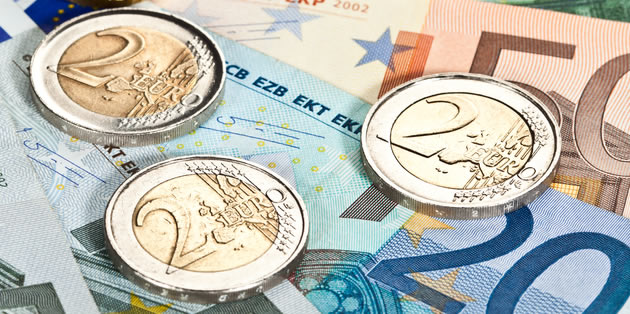Euro Extends Losses Following Greek Retail Sales Figures Release
Greek Retail Sales have contracted again in October, although not by as much as originally expected. Sales losses slowed from -3.3% to -2.5% year-on-year (YoY), although the better-than-expected performance has not helped the Euro, which is now trending -0.8% down against the Australian Dollar.
Earlier…
A rise in iron ore prices, albeit a temporary one, has spurred the Australian Dollar (AUD) upwards, allowing it to make significant gains against the Euro (EUR) as well as other major currencies. Meanwhile, the Euro is down, possibly as investors struggle to predict the future actions of European Central Bank (ECB) President Mario Draghi as 2016 looms.
EUR/AUD Exchange Rate Trends Down as Investors Attempt to Anticipate Next ECB Move
The Euro is currently slumping against several major currencies, losing -0.2% against the Japanese Yen (JPY) and the Polish Zloty (PLN), -0.4% against the Indian Rupee (INR) and -0.5% against the Australian Dollar.
The slump comes as investors speculate over the future of Eurozone monetary policy, with uncertainty surrounding the direction that ECB President Mario Draghi will take. Draghi had spent months talking about the need to increase stimulus and cut interest rates, which saw economists predicting everything from a cut in the deposit rate to -0.4% to an extension of monthly QE to €75 billion. Instead, the ECB disappointed and shocked the markets by delivering only a 10 basis point cut to the deposit rate and extending the duration of QE until March 2017.
Draghi has recently been reported as saying that he believes the ECB has done enough to stimulate the economy and get inflation on track to meet its target of just under 2%. The change in attitude at the last policy meeting suggests that the doves are now outnumbered by the hawks, which could suggest a reluctance to loosen policy any further. However, several Governing Council members have stressed that the ECB still has plenty of tools available should the economy require additional stimulus.
The mixed messages are in part contributing to the Euro decline, with the EUR/AUD exchange rate currently trending in the region of 1.4940.
AUD/EUR Exchange Rate Trends up Following Temporary Iron Ore Rally
After strengthening yesterday thanks to the high-yielding nature of Australian government bonds, the Australian Dollar has been buoyed again today by an increase in spot buying activity for iron ore, resulting in iron ore futures leaping up 4%. The price of iron ore rose slightly overnight, with the price of iron to be delivered immediately to China rising 2.2% to US$41.40 per tonne, the highest since the 1st of December. According to Beijing-based analyst for CRU, Wang Di, ‘Traditionally, seaborne supply decreases in January to early February. Domestic buyers are purchasing now for future needs fearing less supply.’
This could suggest that the price rally is only temporary, with Capital Economics forecasting a drop in iron ore prices into the $20s, before rebounding to close the year higher. While this could spell bad news for the Australian Dollar during the beginning of 2016, Capital Economics predict iron ore will end 2016 in the region of $50 per tonne, although Goldman Sachs forecast prices remaining under $40 a tonne for another three years.
The AUD/EUR exchange rate is currently trending between 0.6658 and 0.6708.
EUR/AUD Exchange Rate Forecast: Greek Retail Sales Provide Sole Direction for Traders
Once again data is sparse and the volume of trades being conducted is thin today, so investors will be giving more credence than usual to the upcoming Greek Retail Sales figures, which are predicted to show that contraction slowed from -3.36% to -3.2%.
The EUR/AUD exchange rate is currently trading between 1.4900 and 1.5016.



